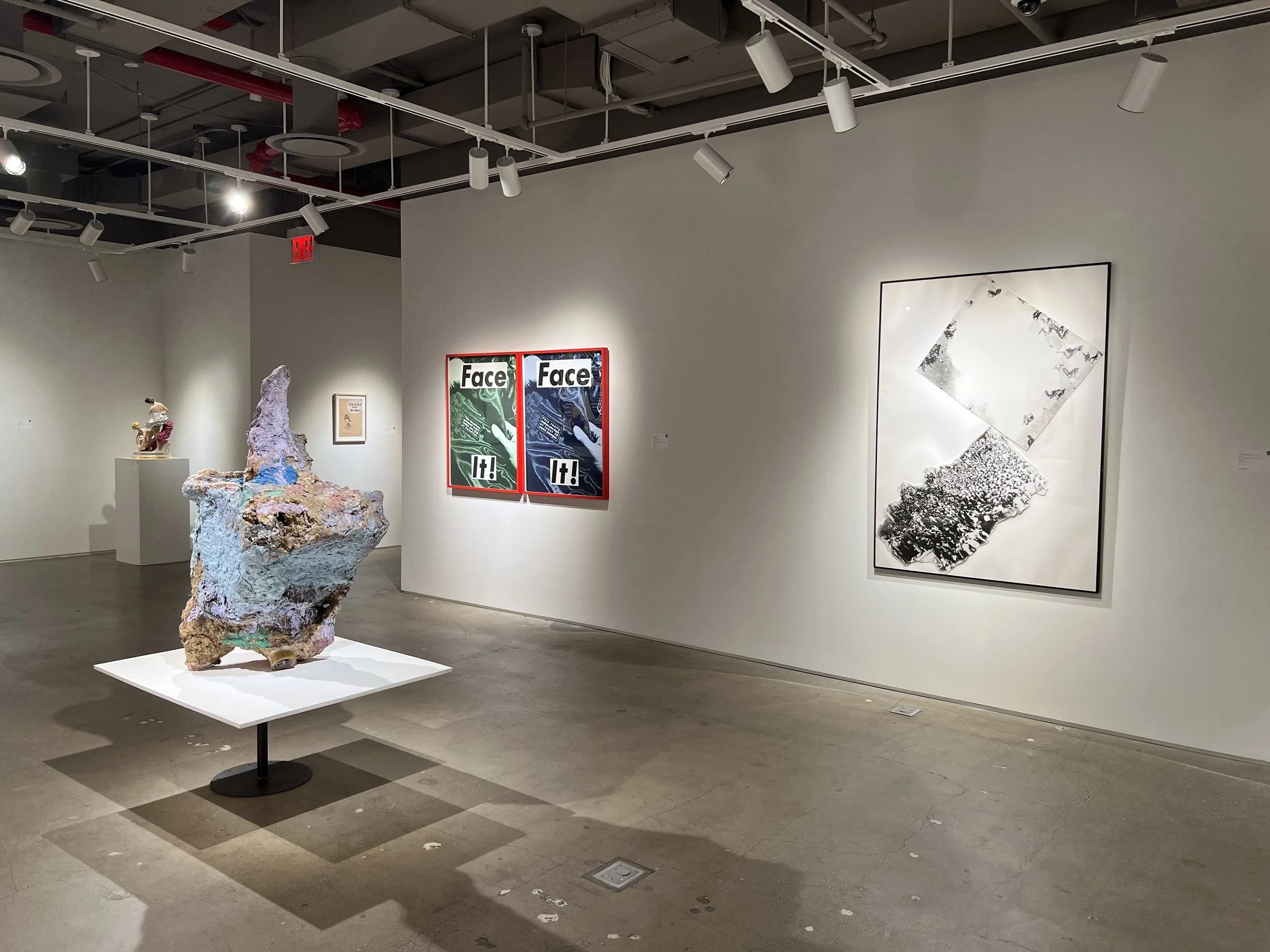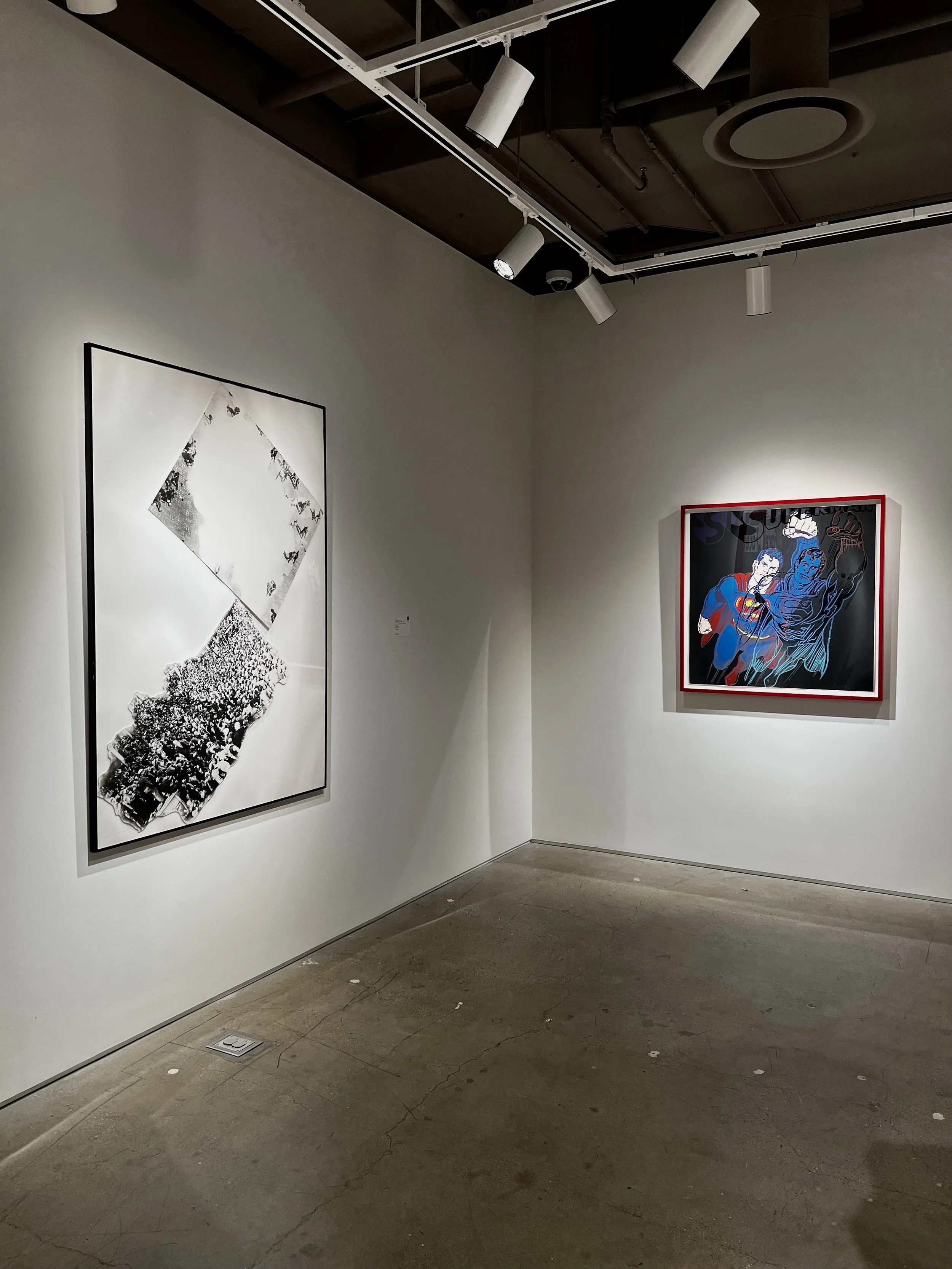The Music of Silence: Finding meaning in the creation of space in “Two Crowds: Trouble (Excluded)” (1986) by John Baldessari
Written by Nínive Vargas de la Peña for Sotheby’s Contemporary Curated. March 2022.
A paragon of conceptual art, John Baldessari aimed for the construction of meaning through subverting expectations, demanding a careful revision into his true intentions. In his stride to never produce “boring” art, Baldessari was often found reinventing and reimagining his practice via new mediums of creation. Incursions into photography, painting, printmaking, performance, among other wide varieties of media compose the body of his oeuvre. Through his enduringly successful career, his thought provoking pieces questioned the long standing premises of art history and its iconography; sometimes, through the usage of the written word as building blocks, other times, through the elimination of entities and identities by the addition of geometric shapes subverting the viewer’s priority of vision through its obtrusion.
“I do believe that art comes from art.”
John Baldessari
Emptiness
witholds meaning
John Baldessari. Two Crowds: Trouble (Excluded); Watching (Included) (1986). Private Collection.Citing Giotto and Andrea Mantegna as two looming figures dominating his creative inspirations, this giant of conceptual art brought their lessons into actuality. The closely arranged figures of the Florentine master, suffering in imagined spaces, have been rethought through a contemporary gaze, replacing the grandiose emotional expressions through evocative geometric figures. Meanwhile, the packed crowds appearing on the frescoes are displaced and replaced by empty voids carrying as much meaning. While working with diametrically opposed forms of representation, the end result conveys the same emotional experience; a sense of a profoundly suggestive psychological representation. In this vein, Baldessari constructed his Crowd series, conceptual studies into how reason and the sense of self tend to disappear once the individual enters the multitude.
John Baldessari. Two Crowds: Trouble (Excluded); Watching (Included) (1986). Private Collection.Emptiness can withhold meaning within its potential of occupancy. In his Two Crowds: Trouble, the multitude has been displaced from their gathering location and thrown into a white void rendering the gatherers devoid of standing. Meanwhile, an empty space deprived of subjects has been generated in the middle of a piazza. Emphasizing the unresolved connection between the two pictures, these static images are surrounded by a liminal white space setting them apart and into a palpable tension. Both the crowd and the piazza appear to come from different scenes marked by their dissonant outlines, yet they are still waiting to be merged into a single image. The absurd chaos created by the intervention of these pictures seems to surpass the disorder that a single image would have generated. It is in this entropic quality of art to fall and converge into new artistic premises that Baldessari found his ultimate method of communication.




